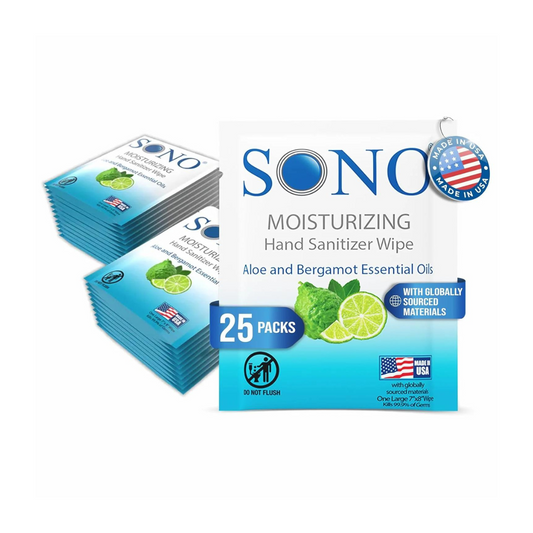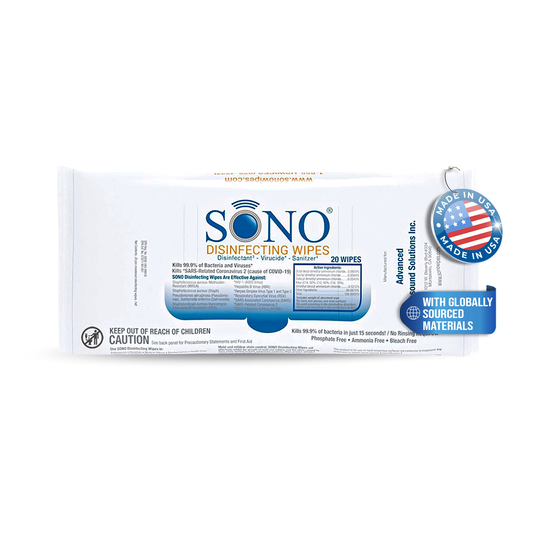Are you making the most of your disinfecting wipes? In today's world, it's more important than ever to keep our surroundings clean and germ-free. Disinfecting wipes can be a convenient and effective tool for maintaining a hygienic environment, but it's essential to use them safely and correctly.
In this article, we'll share 10 essential tips for using disinfecting wipes safely and effectively. Whether you're using wipes at home, in the office, or on the go, these tips will help you maximize their germ-fighting power while minimizing any potential risks.
From understanding the ingredients to properly disinfecting different surfaces, we'll cover everything you need to know to confidently use disinfecting wipes. We'll also address common mistakes to avoid and provide guidance on storage and disposal.
By following these tips, you'll not only ensure the safety of yourself and those around you, but you'll also make the most of your disinfecting wipes, keeping your environment as clean and germ-free as possible. So, let's dive in and discover the best practices for using disinfecting wipes effectively!
Understanding the Importance of Proper Disinfecting
Proper disinfecting is crucial for maintaining a healthy and germ-free environment. Disinfecting wipes are designed to kill or inactivate various types of microorganisms, including bacteria and viruses. By using these wipes correctly, you can reduce the risk of spreading infections and keep yourself and others safe.
It's important to note that disinfecting wipes are different from cleaning wipes or sanitizing wipes. Cleaning wipes are primarily used to remove dirt and grime from surfaces, while sanitizing wipes are intended to reduce the number of germs on surfaces. Disinfecting wipes, on the other hand, are specifically formulated to kill or inactivate germs.
When used properly, disinfecting wipes can be highly effective in eliminating harmful microorganisms. However, it's essential to follow the manufacturer's instructions and take certain precautions to ensure their maximum effectiveness and safety.
Choosing the Right Disinfecting Wipes
Not all disinfecting wipes are created equal. Before purchasing a product, it's important to consider the specific needs of your environment and the surfaces you plan to disinfect. Look for wipes that are registered with the Environmental Protection Agency (EPA) as they have been tested and approved for their disinfecting capabilities.
Different disinfecting wipes may have varying active ingredients, such as quaternary ammonium compounds, hydrogen peroxide, or alcohol. Each of these ingredients has its own effectiveness against different types of germs. Read the labels carefully and choose wipes that are suitable for your intended use.
It's also crucial to ensure that the wipes you choose are non-toxic and safe for the surfaces you plan to disinfect. Some surfaces may be sensitive to certain chemicals, so it's important to check the manufacturer's recommendations and warnings.
Reading and Following the Instructions on the Label
To achieve optimal results, it's essential to read and follow the instructions on the label of the disinfecting wipes. The manufacturer's instructions will provide valuable information on how to use the wipes effectively and safely.
Pay attention to the recommended contact time, which is the amount of time the surface should remain wet with the disinfectant to ensure proper disinfection. This contact time can vary depending on the specific product and the pathogens it targets. Using the wipes for a shorter duration may not effectively kill the germs, while leaving them on for too long may cause damage to sensitive surfaces.
The instructions may also provide guidance on the recommended frequency of use and any precautions you should take. It's important to follow these instructions to ensure the maximum effectiveness of the wipes and to avoid any potential risks.
Preparing the Surface Before Disinfecting
Before using disinfecting wipes, it's important to prepare the surface properly to ensure effective disinfection. Start by removing any visible dirt or debris from the surface by wiping it with a cleaning cloth or rinsing it with water. This will help the disinfectant to better penetrate and kill the germs.
If the surface is heavily soiled, consider using a cleaning wipe or soap and water first to remove the dirt. Once the surface is clean, you can proceed with disinfecting using the wipes.
It's also important to note that certain surfaces may require additional precautions or special cleaning procedures. For example, electronic devices may need to be powered off and unplugged before disinfecting. Always refer to the manufacturer's instructions or guidelines for specific surfaces to ensure proper disinfection without causing damage.
Proper Technique for Using Disinfecting Wipes
- Start by wearing disposable gloves to protect your hands from any potential chemicals or pathogens. (SONO Wipes Requires No Gloves)
- Open the package of disinfecting wipes and remove one wipe.
- Close the package tightly to prevent the remaining wipes from drying out.
- Unfold the wipe and gently wipe the surface, ensuring that it remains wet with the disinfectant for the recommended contact time.
- For larger surfaces, you may need to use multiple wipes to cover the entire area.
- Pay extra attention to high-touch areas such as doorknobs, light switches, and faucet handles.
- Allow the surface to air dry or gently wipe it with a clean cloth if necessary.
Remember to avoid using the same wipe on multiple surfaces to prevent cross-contamination. Discard used wipes properly, as we'll discuss in more detail later.
Common Mistakes to Avoid When Using Disinfecting Wipes
One common mistake is using the wipes on visibly dirty surfaces without cleaning them first. Disinfectants are less effective when used on surfaces covered in dirt or grime. Therefore, it's important to clean the surface before applying the disinfecting wipes.
Another mistake is not allowing the surface to remain wet with the disinfectant for the recommended contact time. Remember that the contact time is crucial for effectively killing the germs. Rushing through the process or wiping the surface dry too quickly can compromise the disinfection process.
Some people also mistakenly assume that a single wipe is sufficient for multiple surfaces. Using the same wipe on different surfaces can spread germs instead of eliminating them. Always use a fresh wipe for each surface to avoid cross-contamination.
Additional Precautions for Sensitive Surfaces or Individuals
For individuals with sensitive skin or respiratory conditions, it's advisable to wear gloves and a mask when using disinfecting wipes. This can help protect against any potential irritation or allergic reactions caused by the disinfectant.
Additionally, if you have pets or young children in your environment, it's important to keep the disinfecting wipes out of their reach. Some disinfectants may be harmful if ingested or if they come into contact with the eyes or skin of pets or young children. Store the wipes in a secure location to prevent accidental exposure.
Conclusion and Final Tips for Using Disinfecting Wipes Safely and Effectively
- Understand the importance of proper disinfecting.
- Choose the right disinfecting wipes for your needs.
- Read and follow the instructions on the label.
- Prepare the surface before disinfecting.
- Use the proper technique for using disinfecting wipes.
- Avoid common mistakes such as not cleaning the surface or using a single wipe for multiple surfaces.
- Dispose of used wipes properly.
- Take additional precautions for sensitive surfaces or individuals.
- Store wipes in a secure location, away from pets and young children.
- Wash your hands thoroughly after disposing of used wipes.
By incorporating these tips into your cleaning routine, you can confidently use disinfecting wipes to maintain a clean and germ-free environment. Stay safe, stay healthy, and make the most of your disinfecting wipes!





